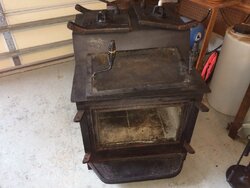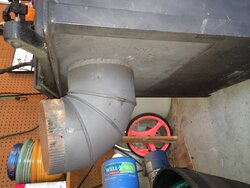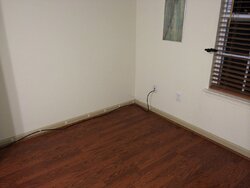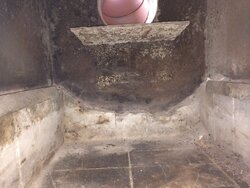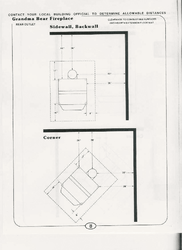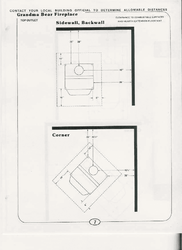Hello,
I've been following the forms trying to get some information about a Fisher Stove I recently acquired, but they are honestly a little over my head. If anyone can help break it down for me, it would be greatly appreciated. Attached is a picture of the stove. I'm not sure how old it is, since there are no stars on it. I recently had someone come out to look at installing it. They tried to tell me there was no way to put the stove less than 36 inches from the wall and then tried to talk me into buying a new stove. I will buy a new stove (from someone else who is not trying to con me) if that would be the most reasonable thing to do, but I've seen a lot of people who are fans of the classics, and it has kind of grown on me. Here is what I am trying to figure out:
1. Am I going to have any problems with EPA laws? I can't find anything in NC preventing me from having an unlisted stove.
2. Where can I buy a decent looking heat shield? Everything I've seen that is pre-made doesn't work for unlisted stoves. I'm not opposed to building one, but I'm not sure what millboard is or where I would buy it. I would really like to have my stove 12 inches from the wall. I can do 18 inches, but prefer 12.
3. How difficult is it to install a chimney stove on your own? Is it better to go out a back wall or straight through the roof?
I'm sure I will have a million more questions, but these are the ones that kind of help me figure out whether it is even worth trying to move forward with the stove or whether I should just sell it and get a new one.
Thanks.
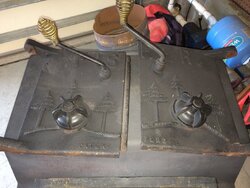
I've been following the forms trying to get some information about a Fisher Stove I recently acquired, but they are honestly a little over my head. If anyone can help break it down for me, it would be greatly appreciated. Attached is a picture of the stove. I'm not sure how old it is, since there are no stars on it. I recently had someone come out to look at installing it. They tried to tell me there was no way to put the stove less than 36 inches from the wall and then tried to talk me into buying a new stove. I will buy a new stove (from someone else who is not trying to con me) if that would be the most reasonable thing to do, but I've seen a lot of people who are fans of the classics, and it has kind of grown on me. Here is what I am trying to figure out:
1. Am I going to have any problems with EPA laws? I can't find anything in NC preventing me from having an unlisted stove.
2. Where can I buy a decent looking heat shield? Everything I've seen that is pre-made doesn't work for unlisted stoves. I'm not opposed to building one, but I'm not sure what millboard is or where I would buy it. I would really like to have my stove 12 inches from the wall. I can do 18 inches, but prefer 12.
3. How difficult is it to install a chimney stove on your own? Is it better to go out a back wall or straight through the roof?
I'm sure I will have a million more questions, but these are the ones that kind of help me figure out whether it is even worth trying to move forward with the stove or whether I should just sell it and get a new one.
Thanks.



